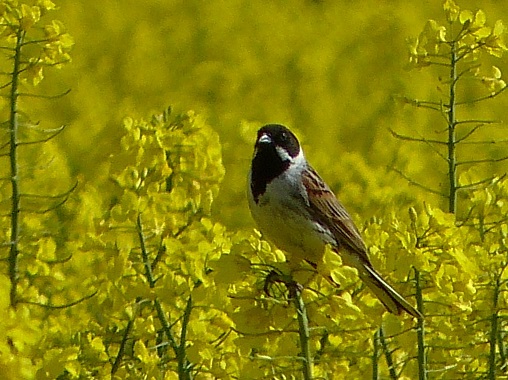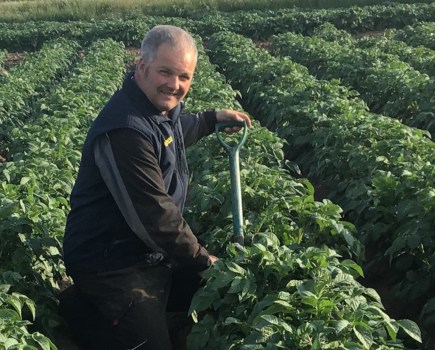So another Cereals event comes and goes. I reckon I’ve been going for over 30 years now so to say the show is becoming a regular June event feels a bit like saying Christmas is becoming a fixture in the calendar.
You hear a few rumours about its future but it does seem to continue to attract a critical mass of the UK arable industry that must guarantee it at least a few more years. But then again, no one really foresaw the abrupt end of the Royal Show after over 150 years. And while we are briefly on the subject of our moribund national show, I still cannot understand as to why Britain is one of the few nations in the world that fails to put on its own national agricultural show.

One possible advocate for glyphosate would be the reed bunting. To quote the RSPB in their Farming for birds fact sheet “reed buntings nest in thick vegetation including crops (especially oilseed rape). Nests can be protected by not swathing.”
Anyway, back to the Cereals event. Leaning on the ringside fence of the sprayers arena you have to be impressed by the advances in sprayer technology on display. Watching the new bits of kit going through their paces made me reflect on the advances we’ve seen in the last 30 years since Cereals began.
In those days, booms used to sway about like drunks exiting a pub at closing time, while today they glide over crops with remarkable stability. But if there’s one aspect of spraying that hasn’t changed much it’s the physical handling of cans. While it’s true that can design and induction hoppers have improved, the uptake in closed transfer systems doesn’t seem to have progressed as much as you would have hoped. It would be nice to think we are not far away from a spray world where we use standardised uniform packaging that can be opened and rinsed clean without much involvement from the operator.
In the future, regulators may move this on by refusing to licence some actives on the grounds of operator exposure. It does seem odd that there’s a large list of species from nesting birds to caterpillars that get considered when it comes to pesticide approvals while the bloke who handles the concentrate isn’t much worried about when it comes to exposure. But then again, maybe I’m falling into the trap of the green NGOs of assuming all pesticides are highly poisonous and hazardous when actually most are a lot safer to handle than things like household bleach.
Talking of which, I took part in a debate at Cereals entitled ‘pre-harvest use of glyphosate should be banned’. I was joined by the effervescent Sean Sparling as we debated against spokesmen from Pesticide Action Network and Organic Farmer and Growers (see below for result).
A key point I was keen to make in my five minutes was to address the argument that the industry would do well to forgo pre-harvest use in order to secure continued use in the autumn before drilling. While it might seem all very reasonable to meet people half way, I’m emphatically of the view we would be ill advised to concede this key pre-harvest use.
For starters, a ban on pre-harvest use would mean the loss of a key production tool that helps keep weeds like couch grass at bay while making harvesting easier and reducing the carbon footprint. It is dangerously illusory to argue that, in terms of political strategy, conceding on pre-harvest use will secure continued use elsewhere. To do so would be to admit there were significant toxicity issues with glyphosate which would then give the antis further grounds to call for a total ban. As the debate over neonicotinoids illustrates, the track record of the anti-pesticide lobby is to secure a partial ban and then press for a total ban. We need to hold the line and stick to the science.
- Results of the debate at Cereals on the motion ‘pre-harvest use of glyphosate should be banned’: Ayes 11, Noes 75.




